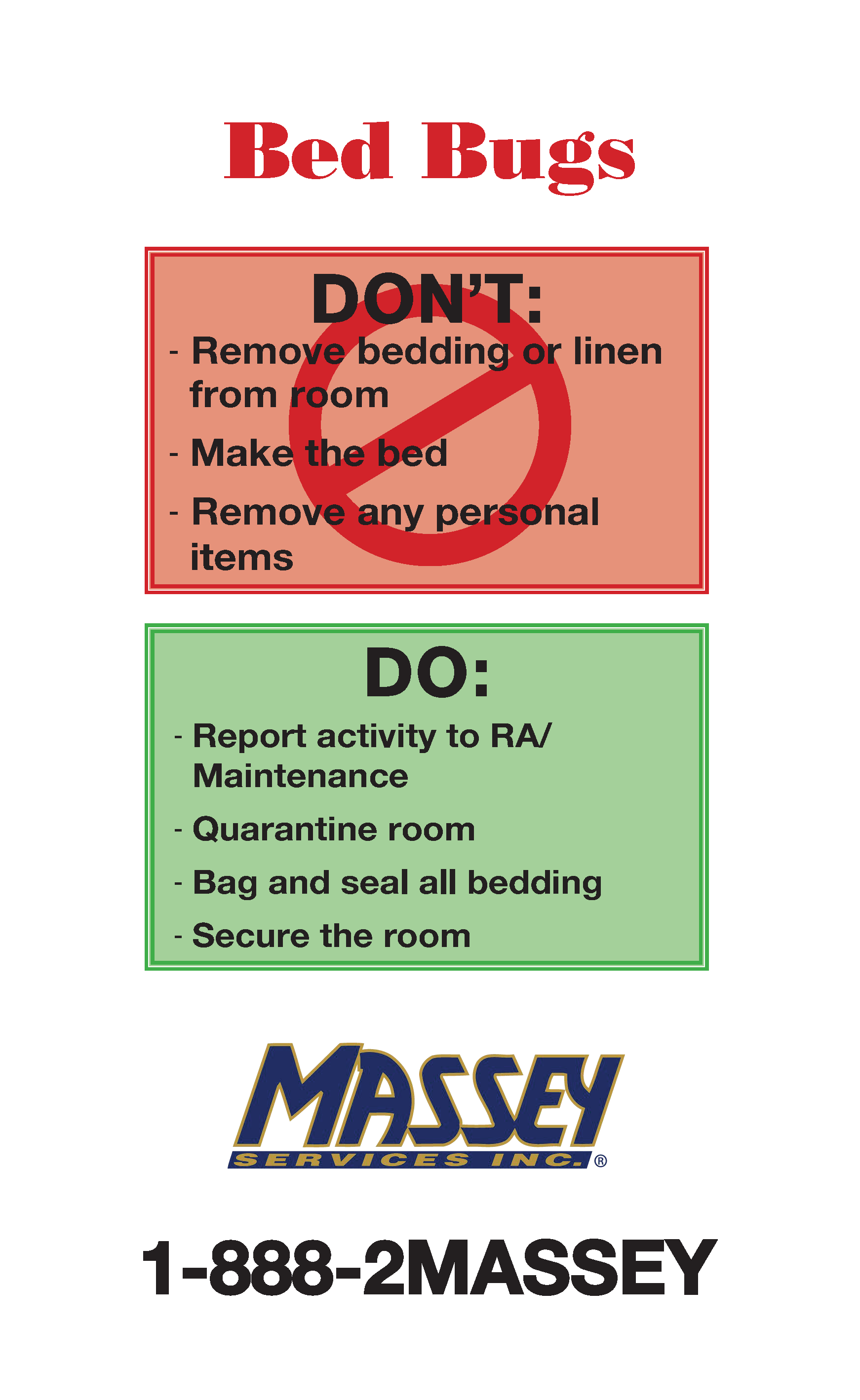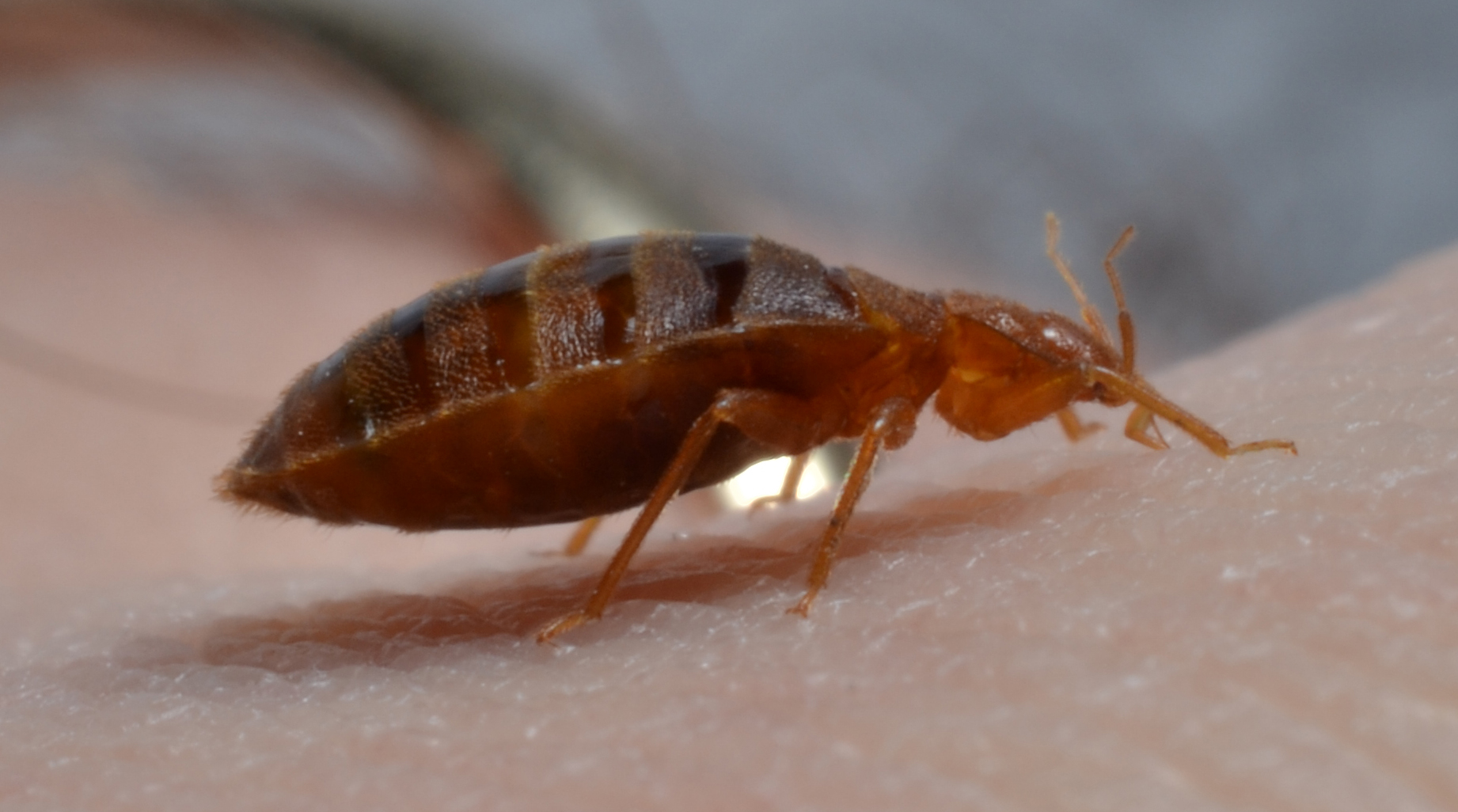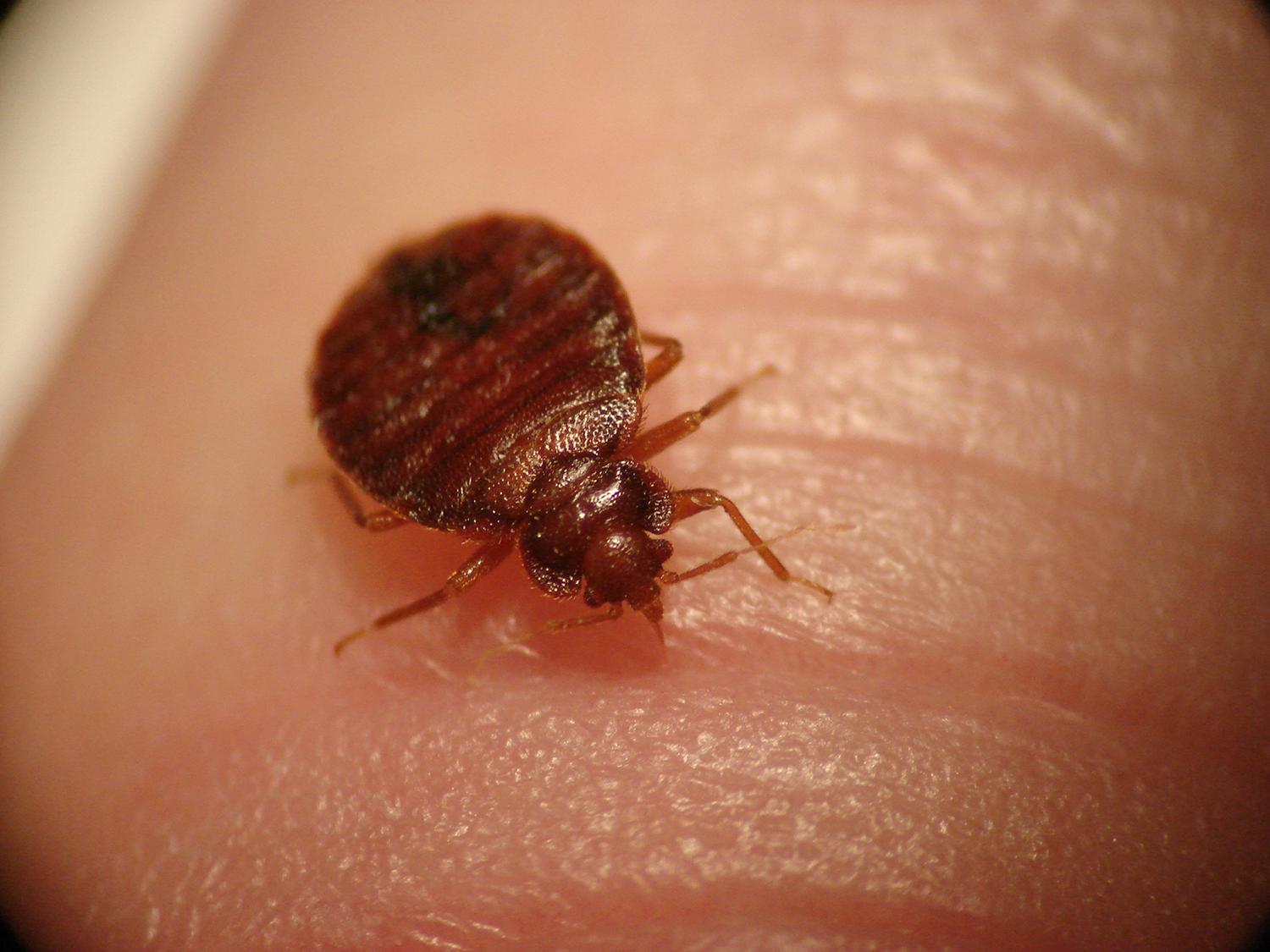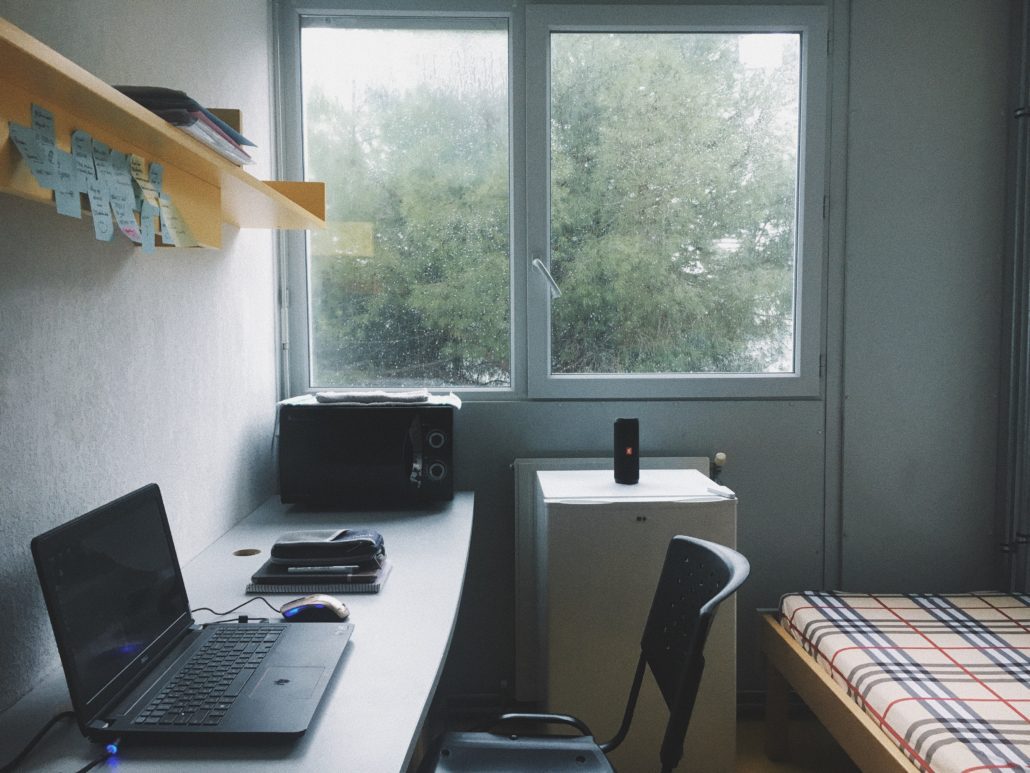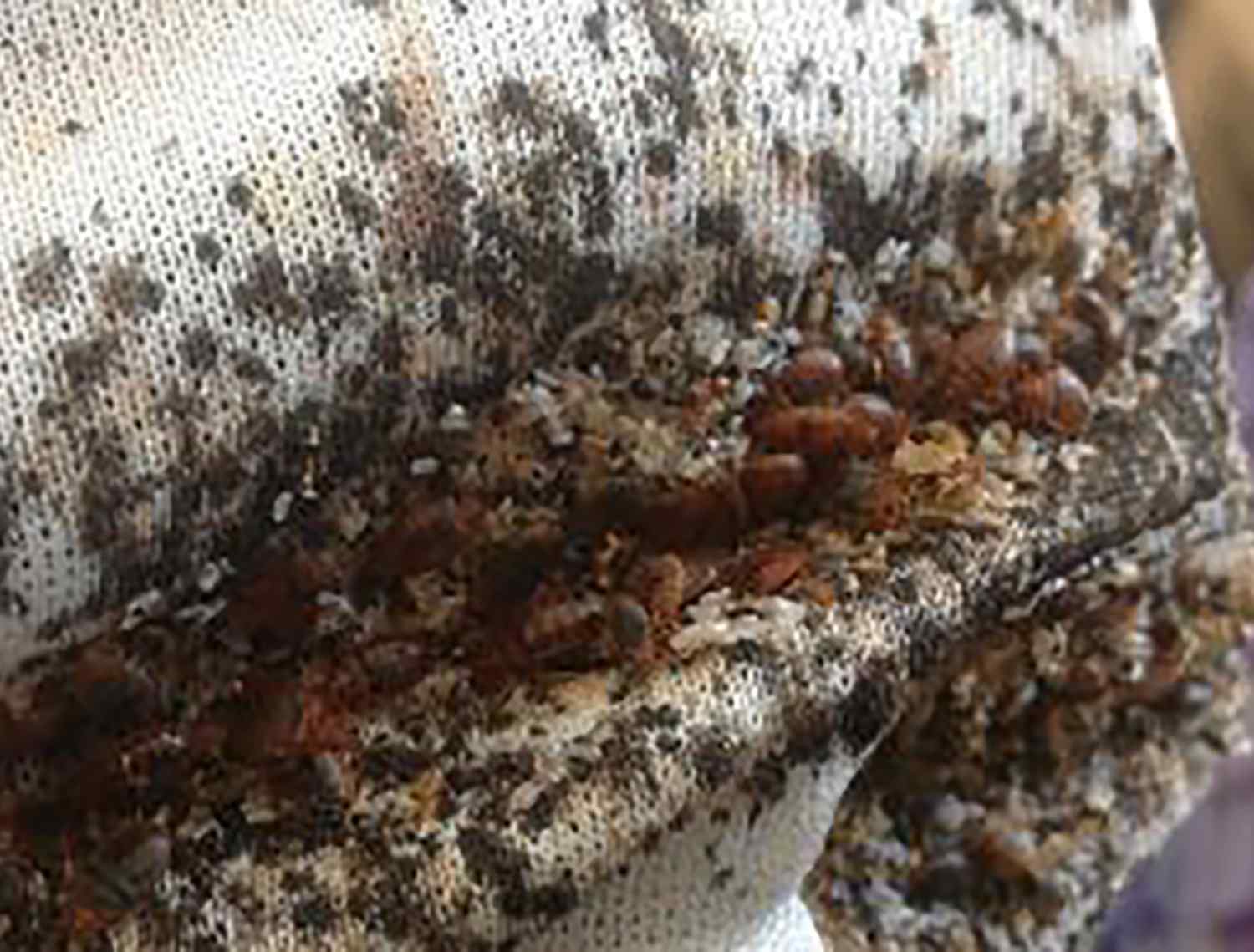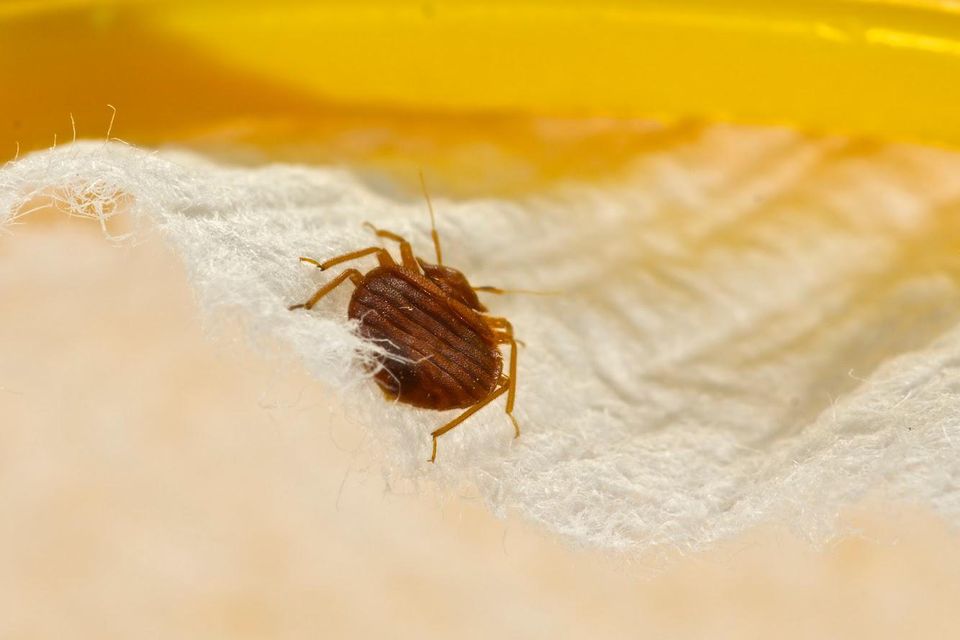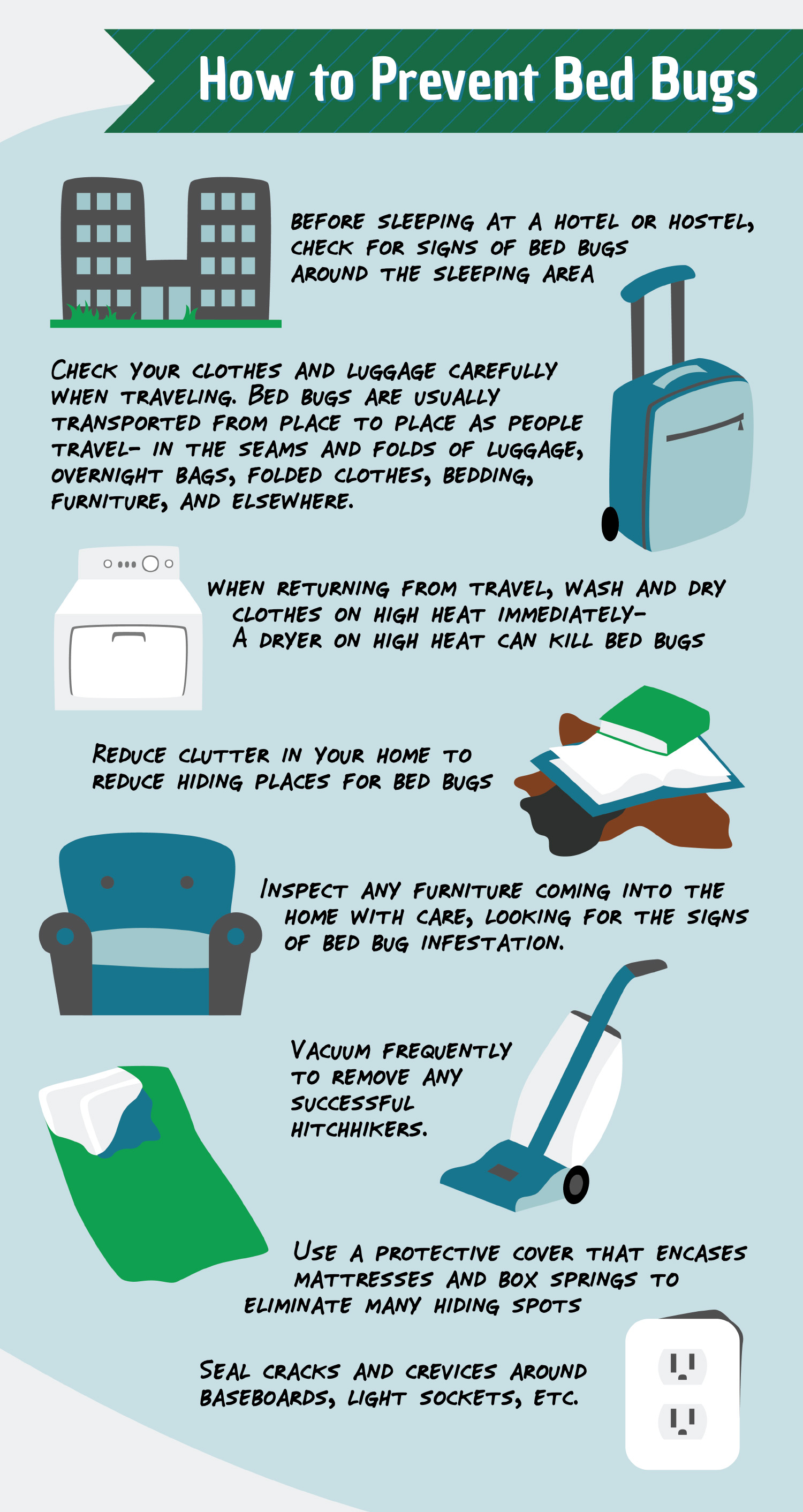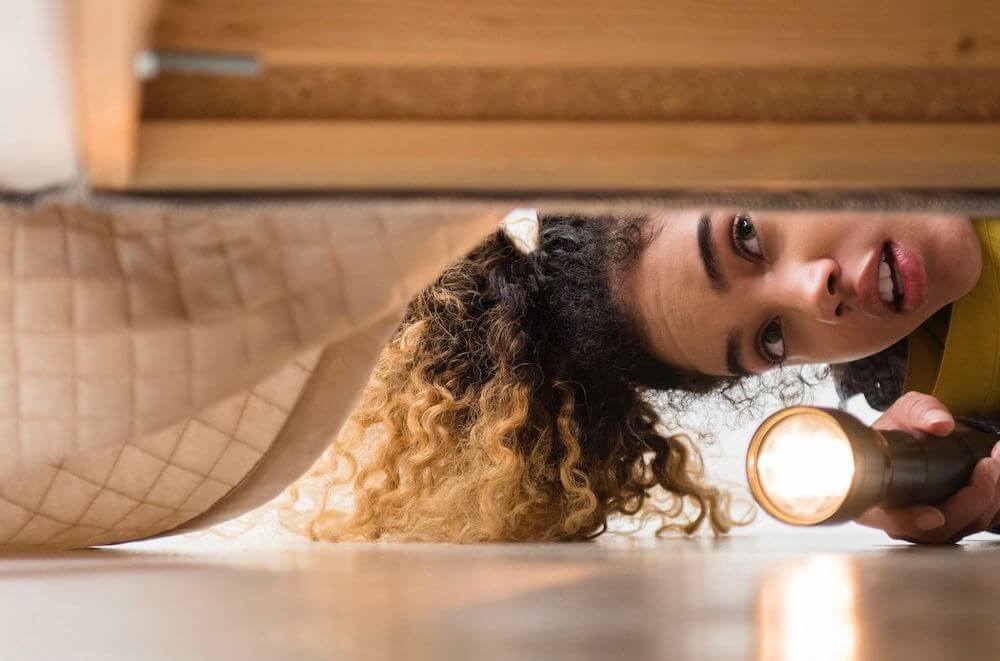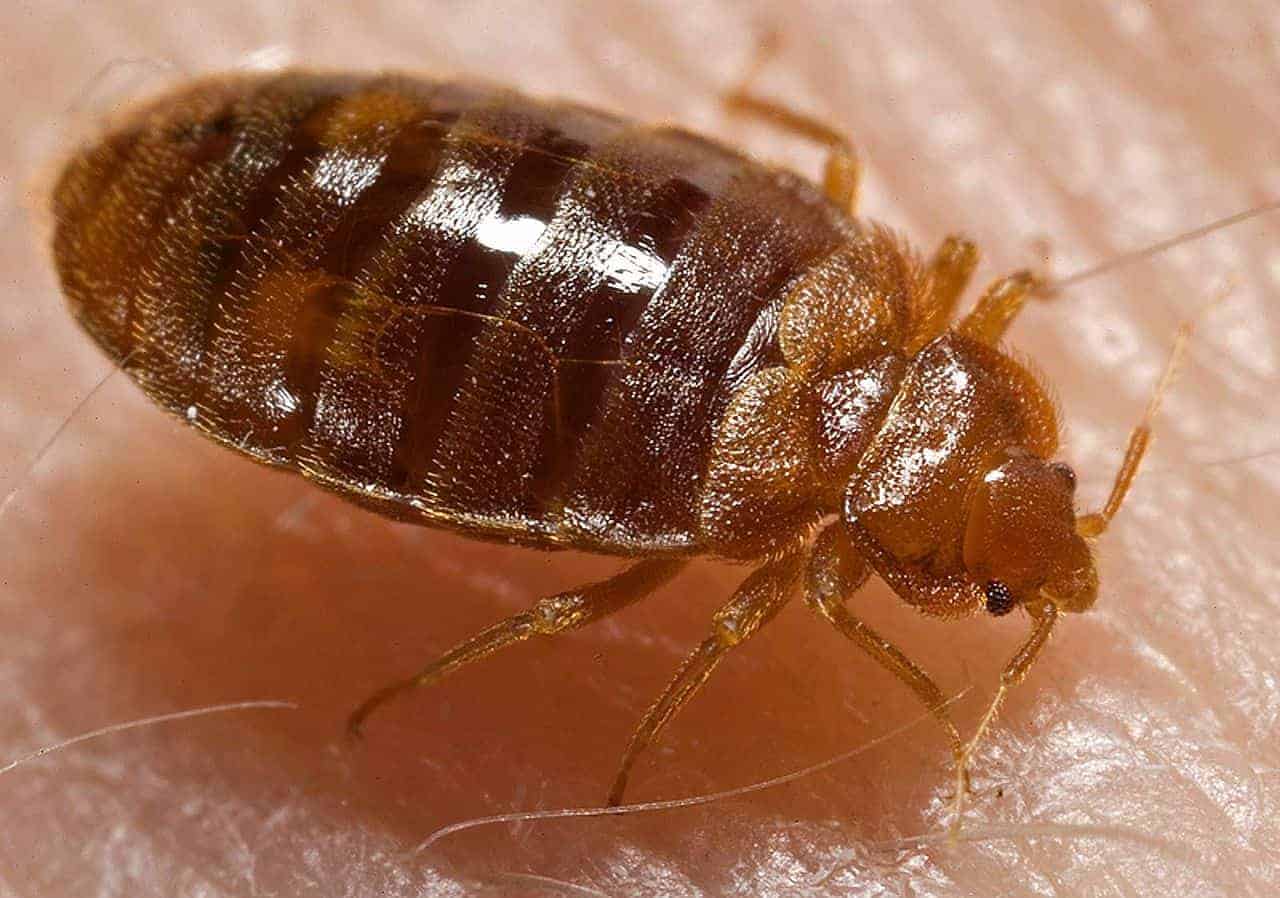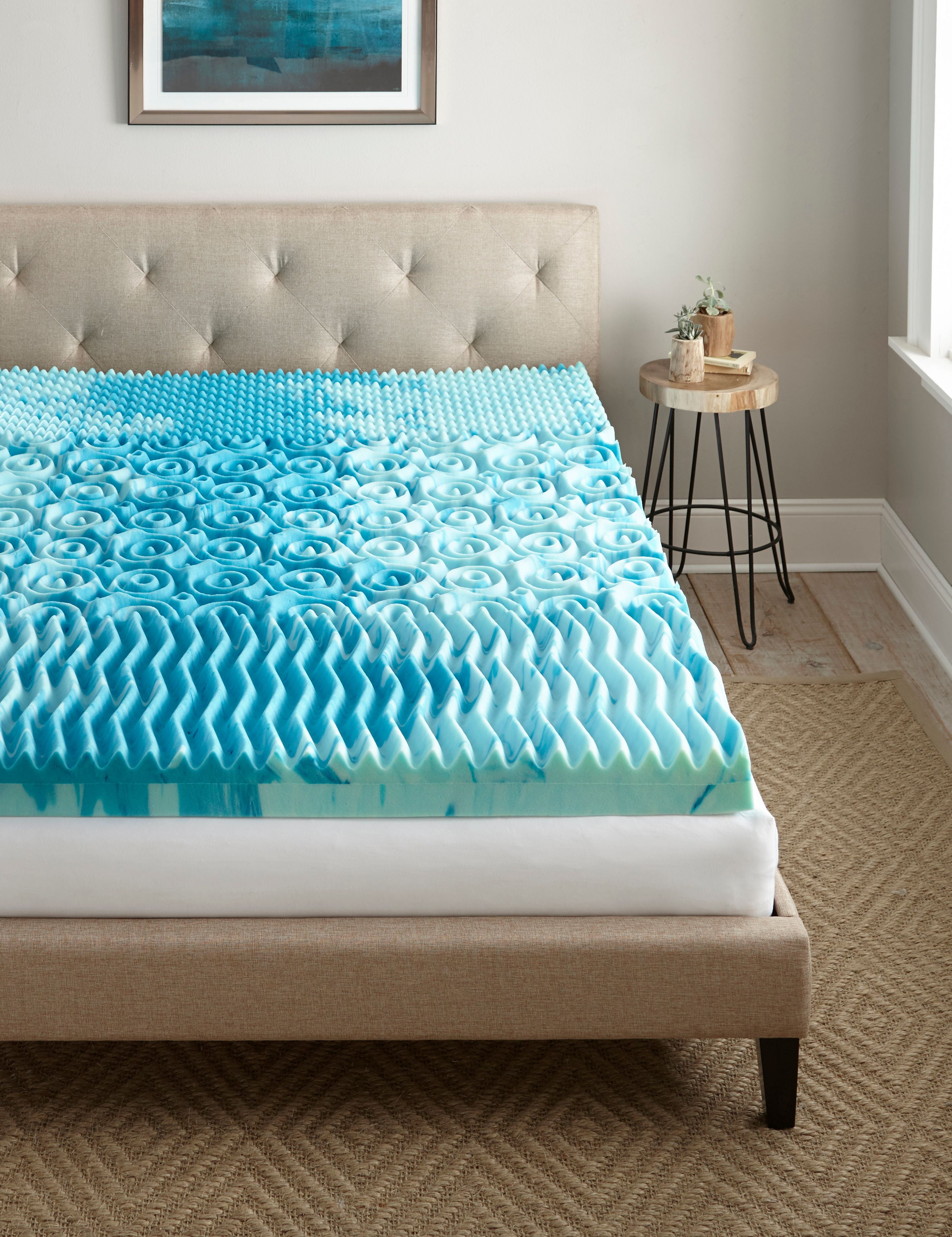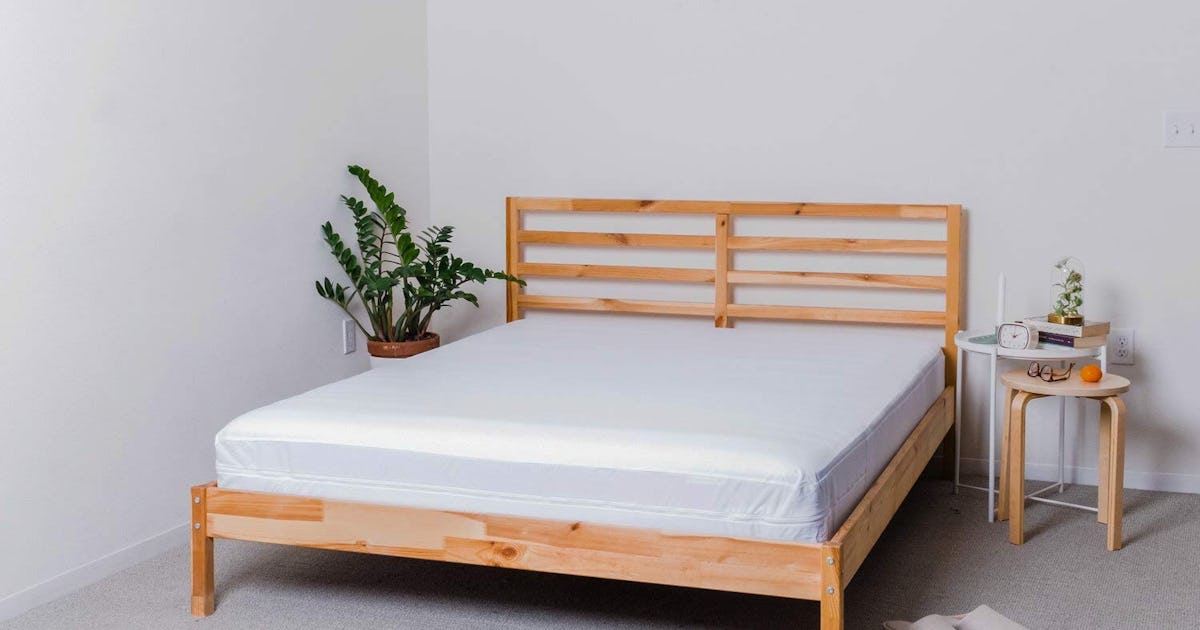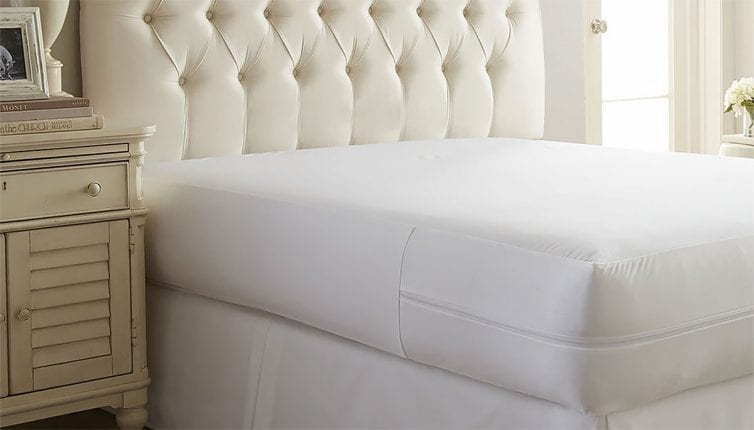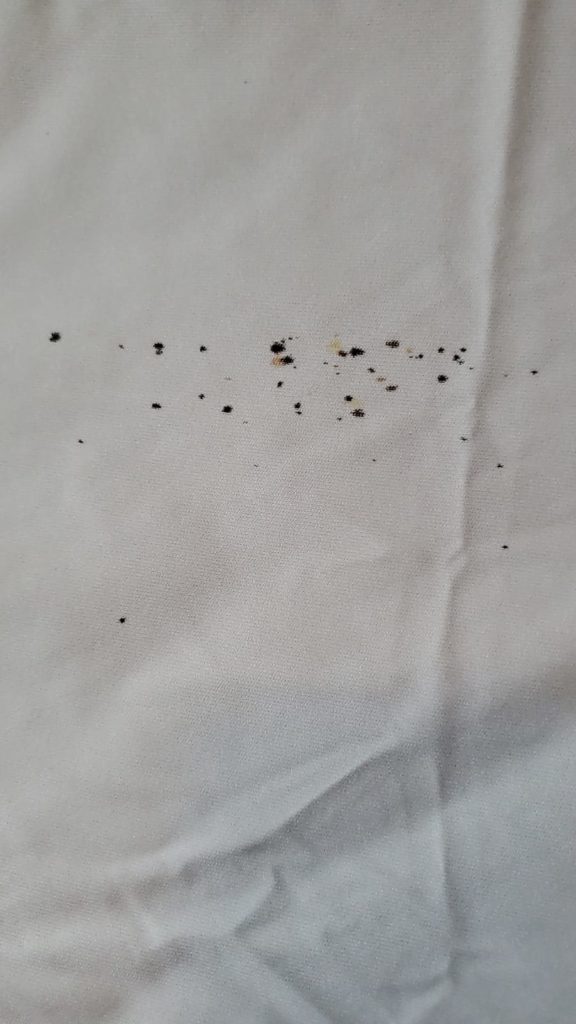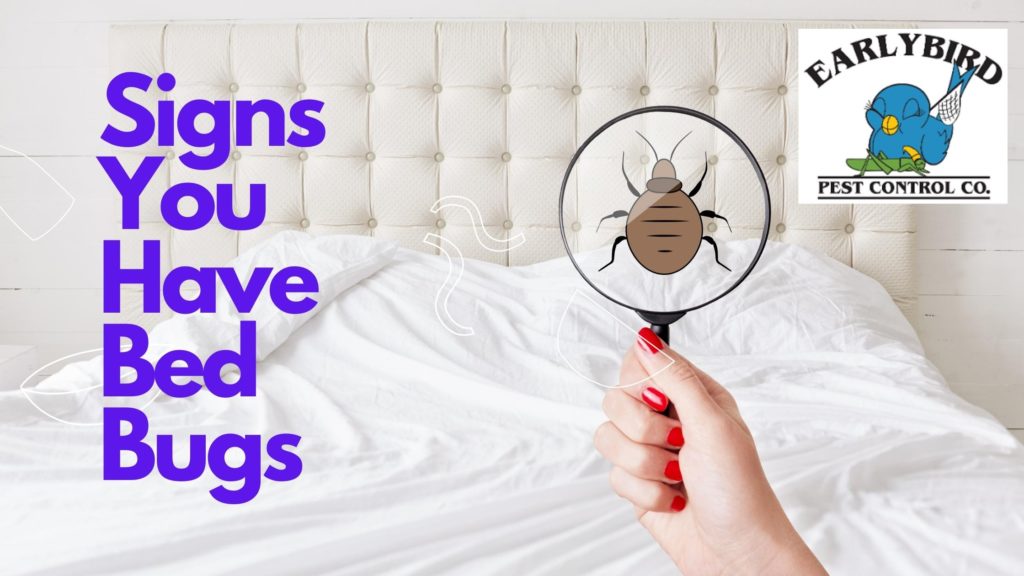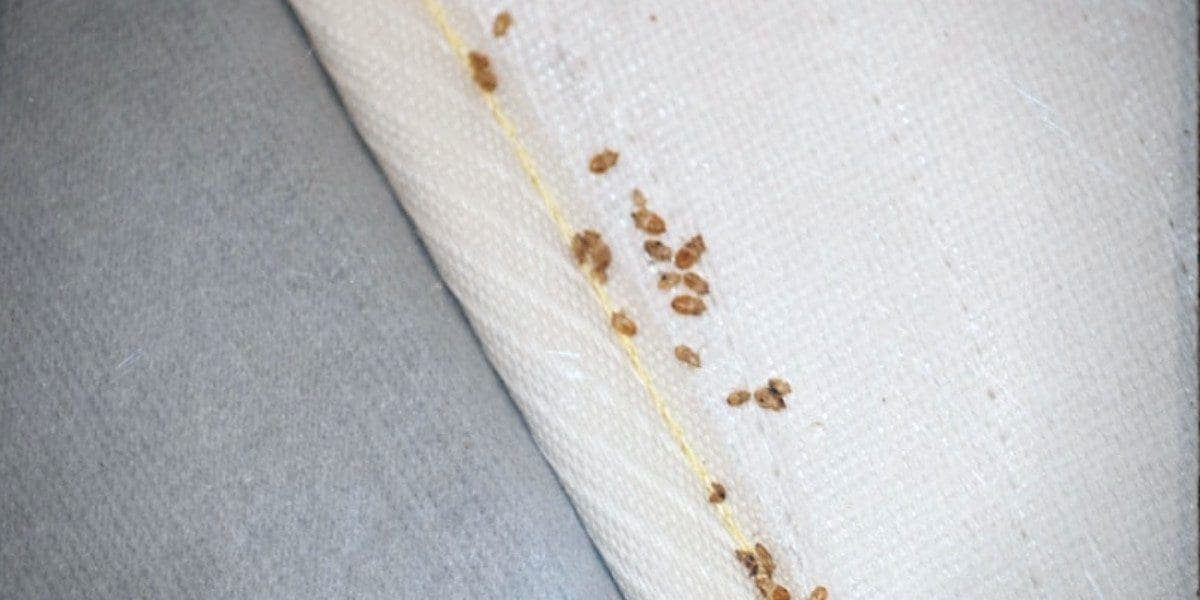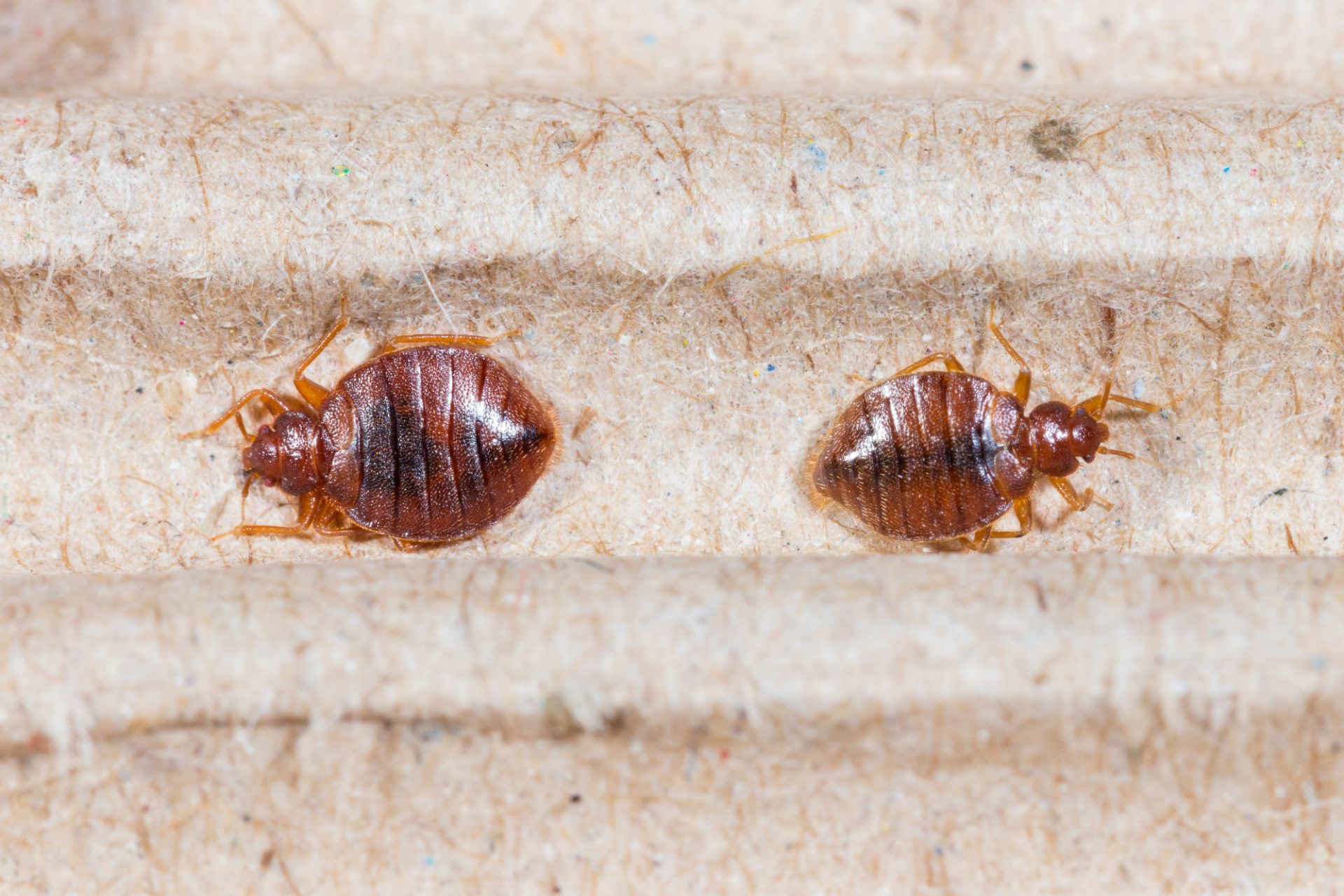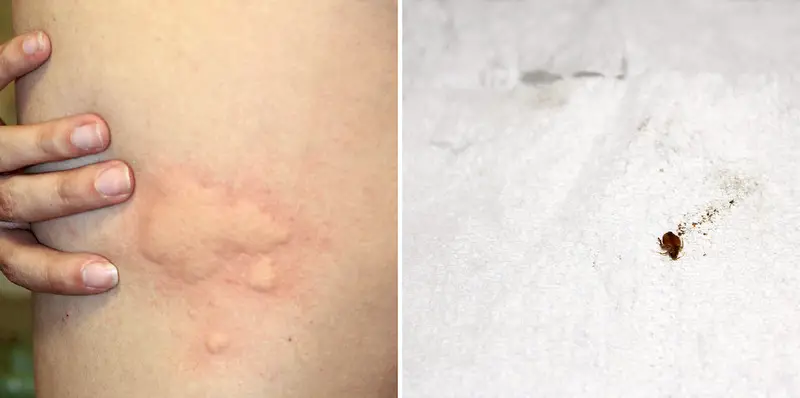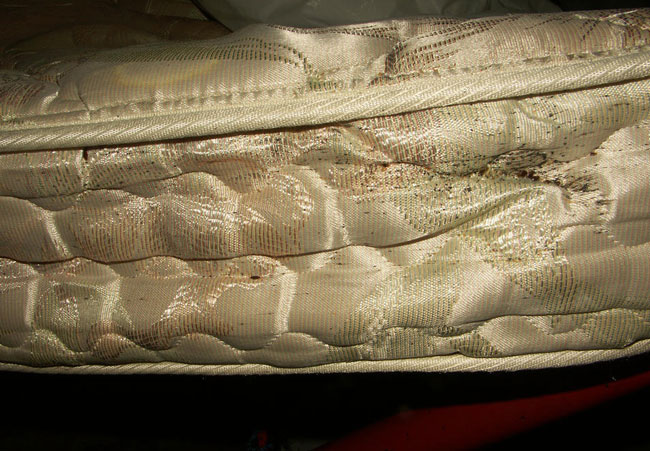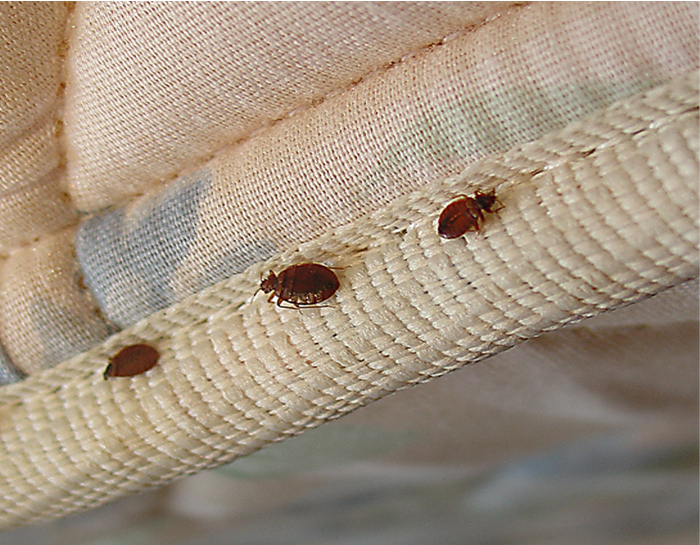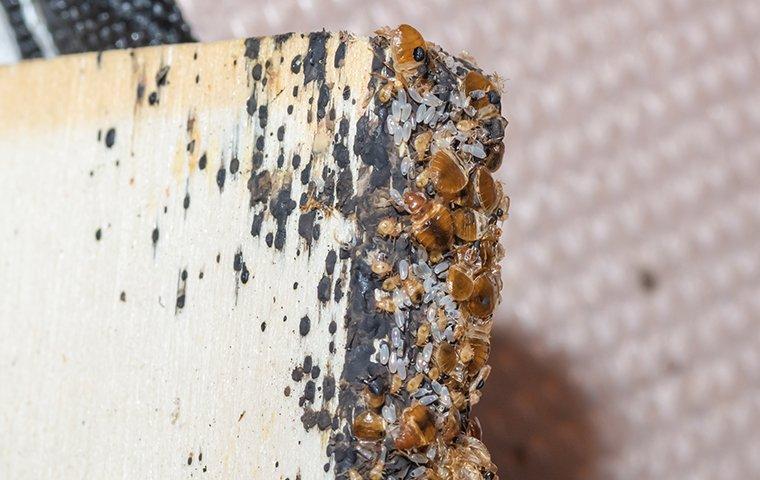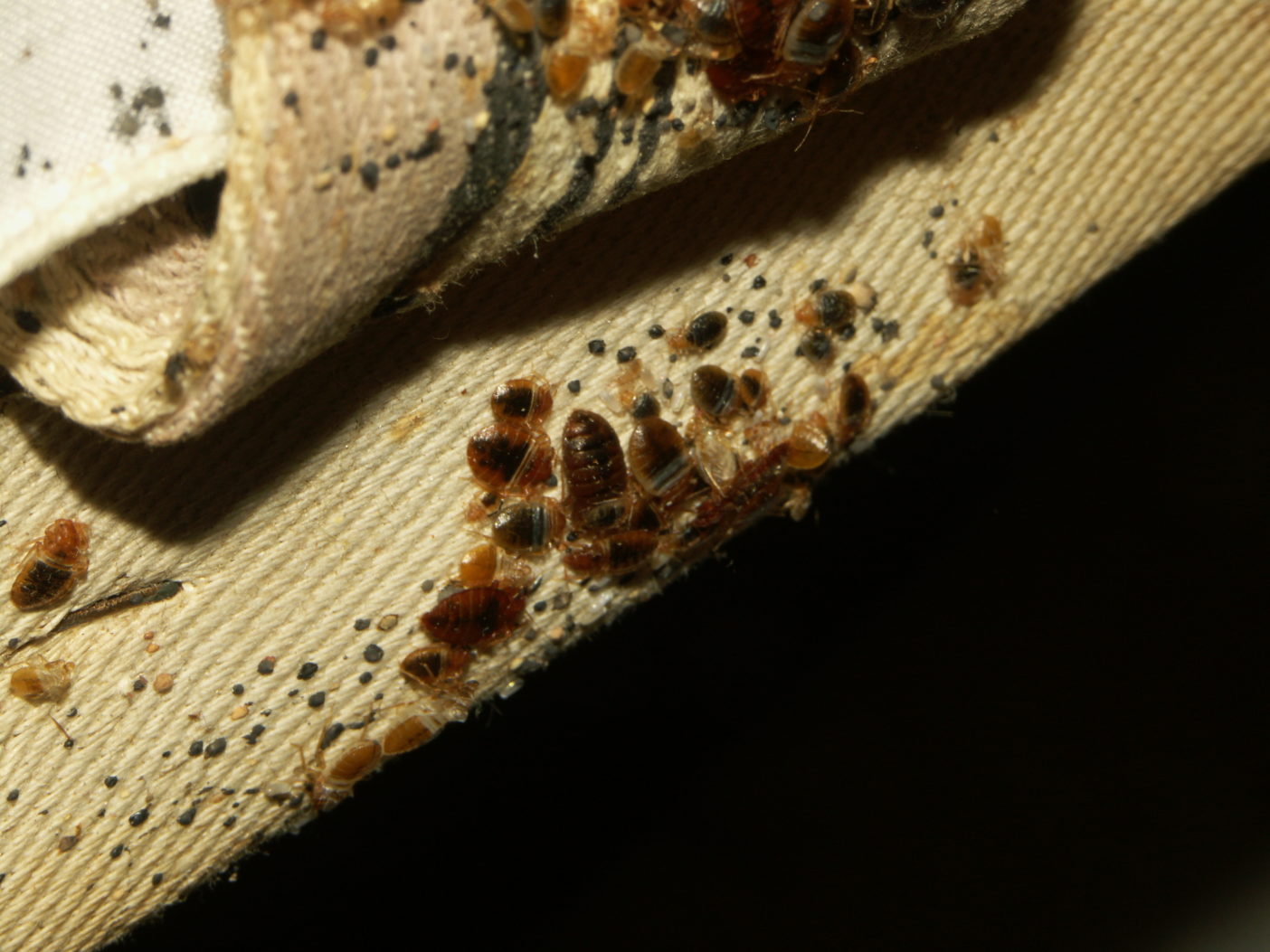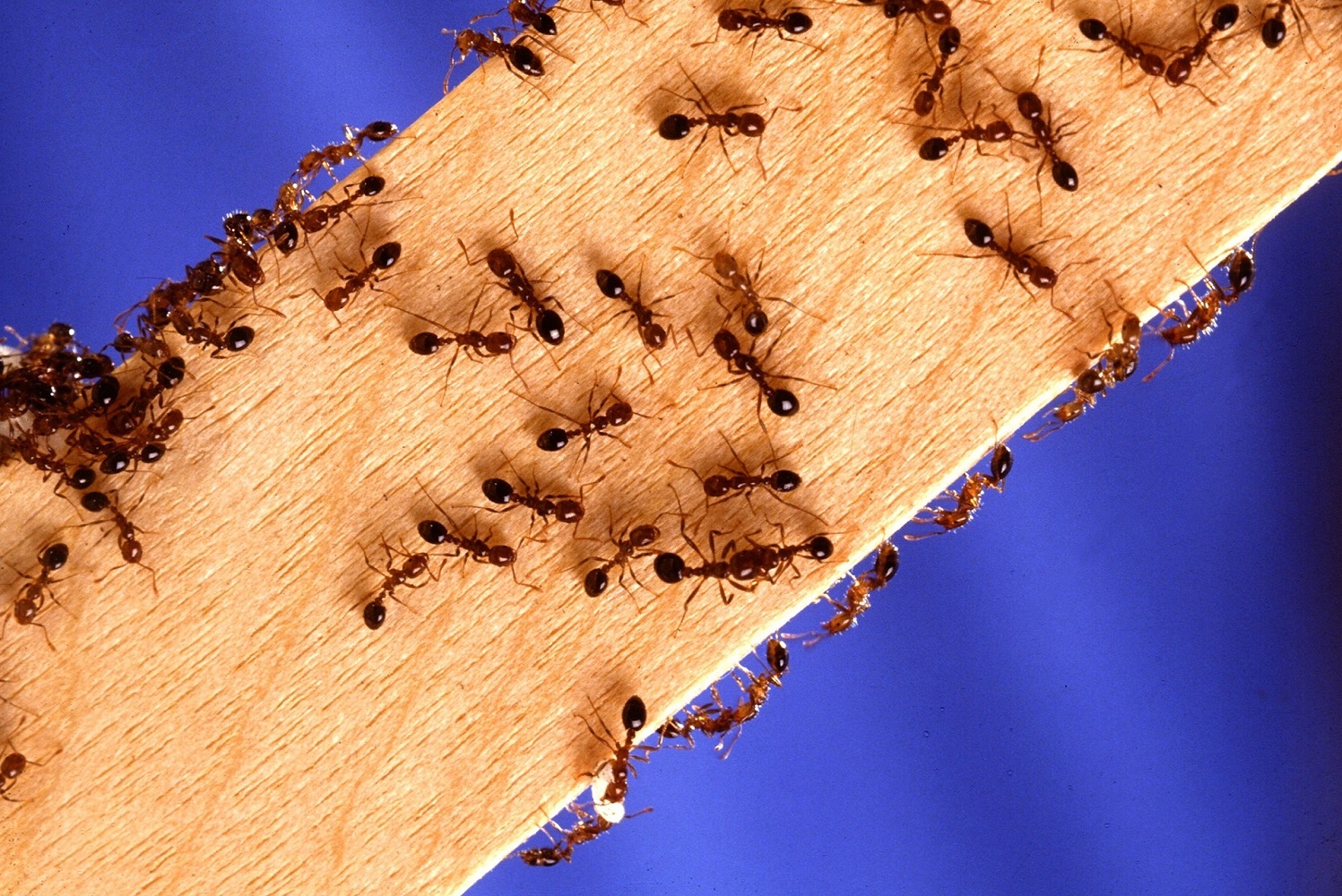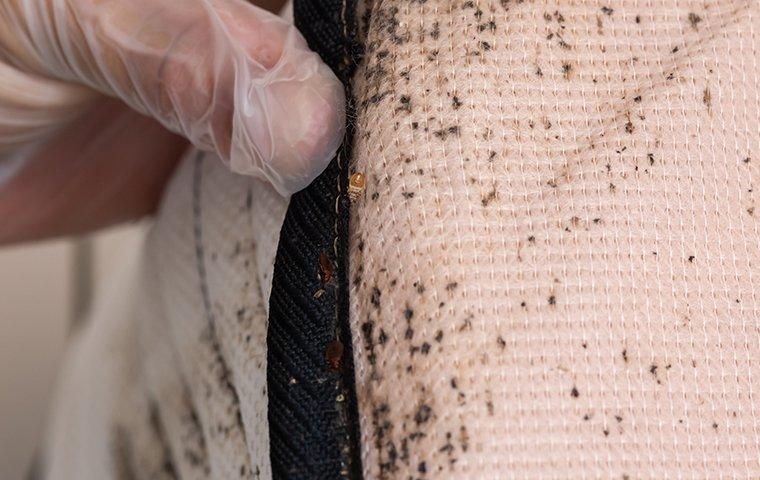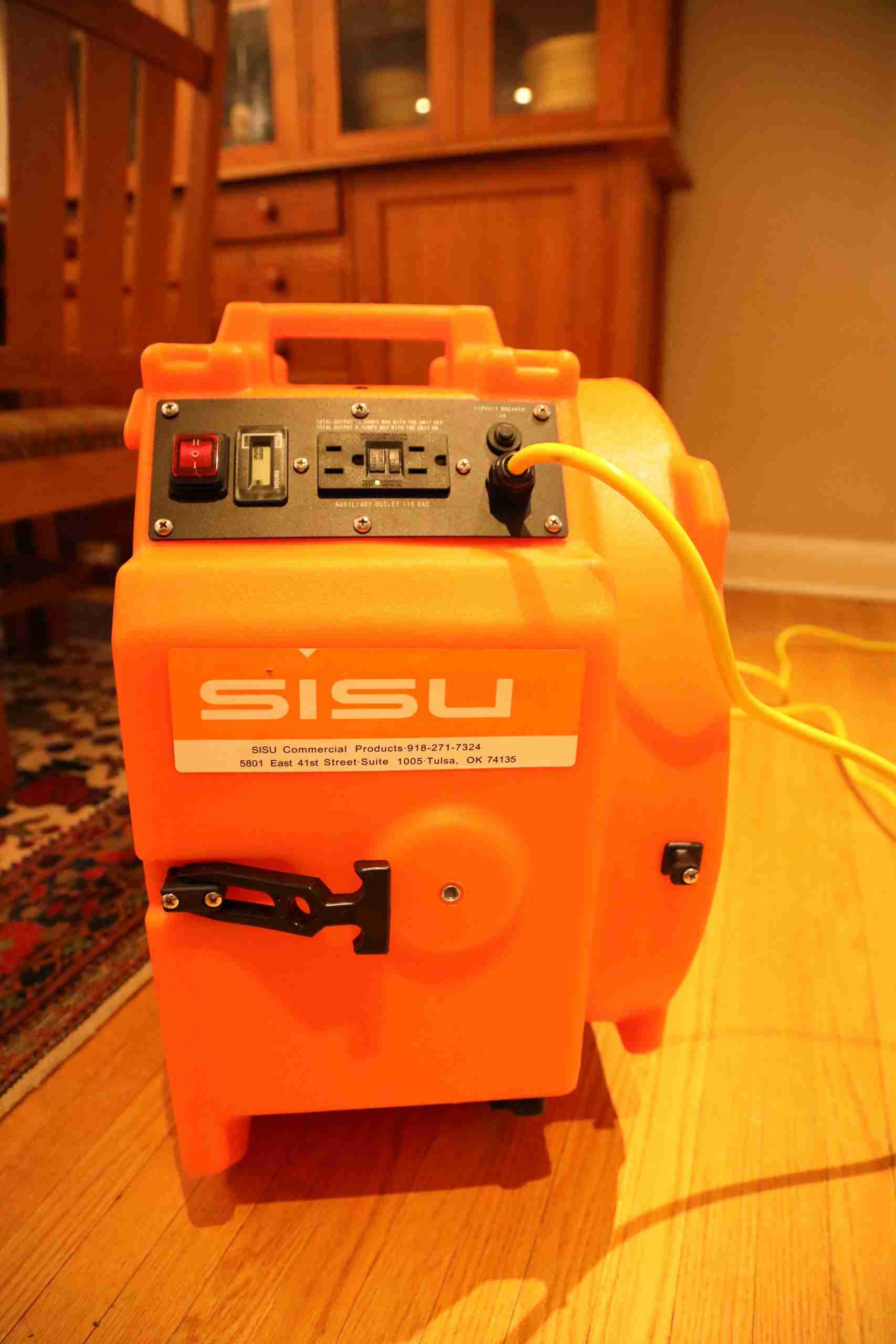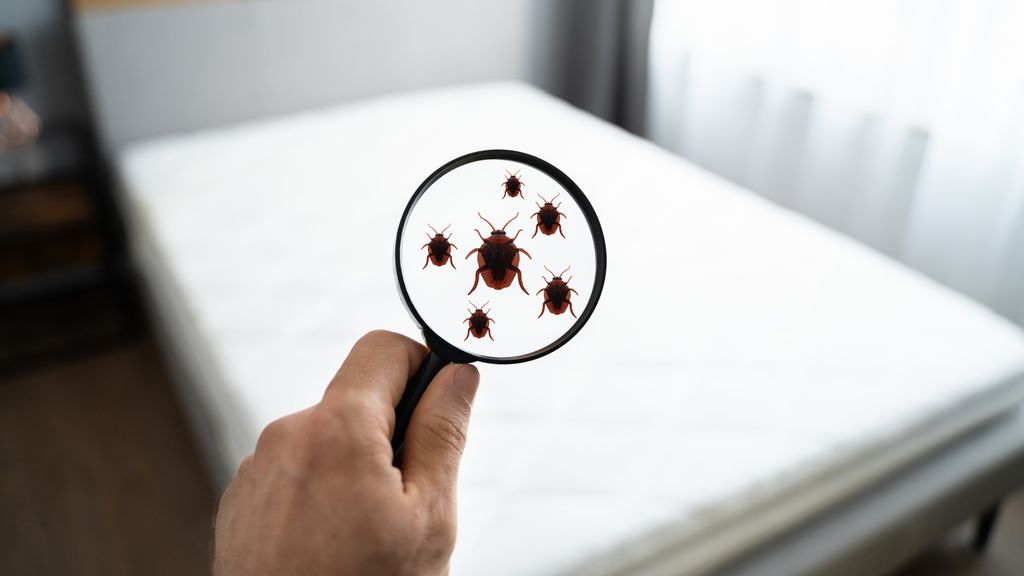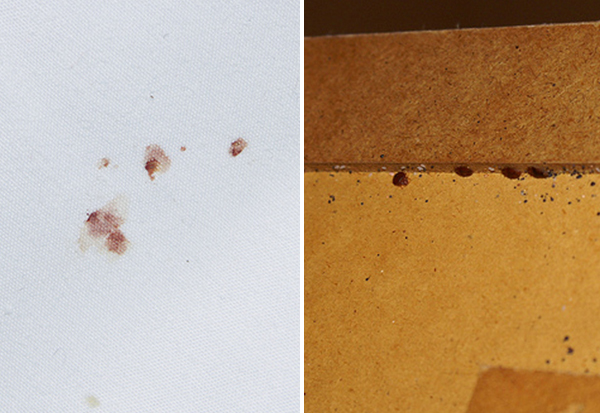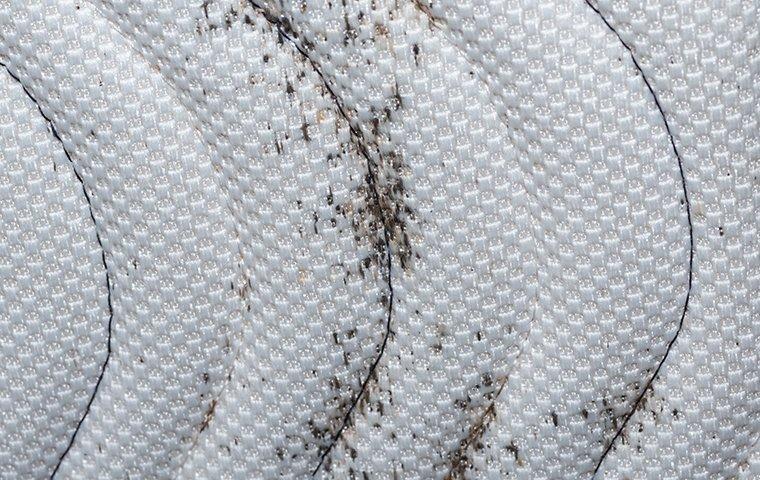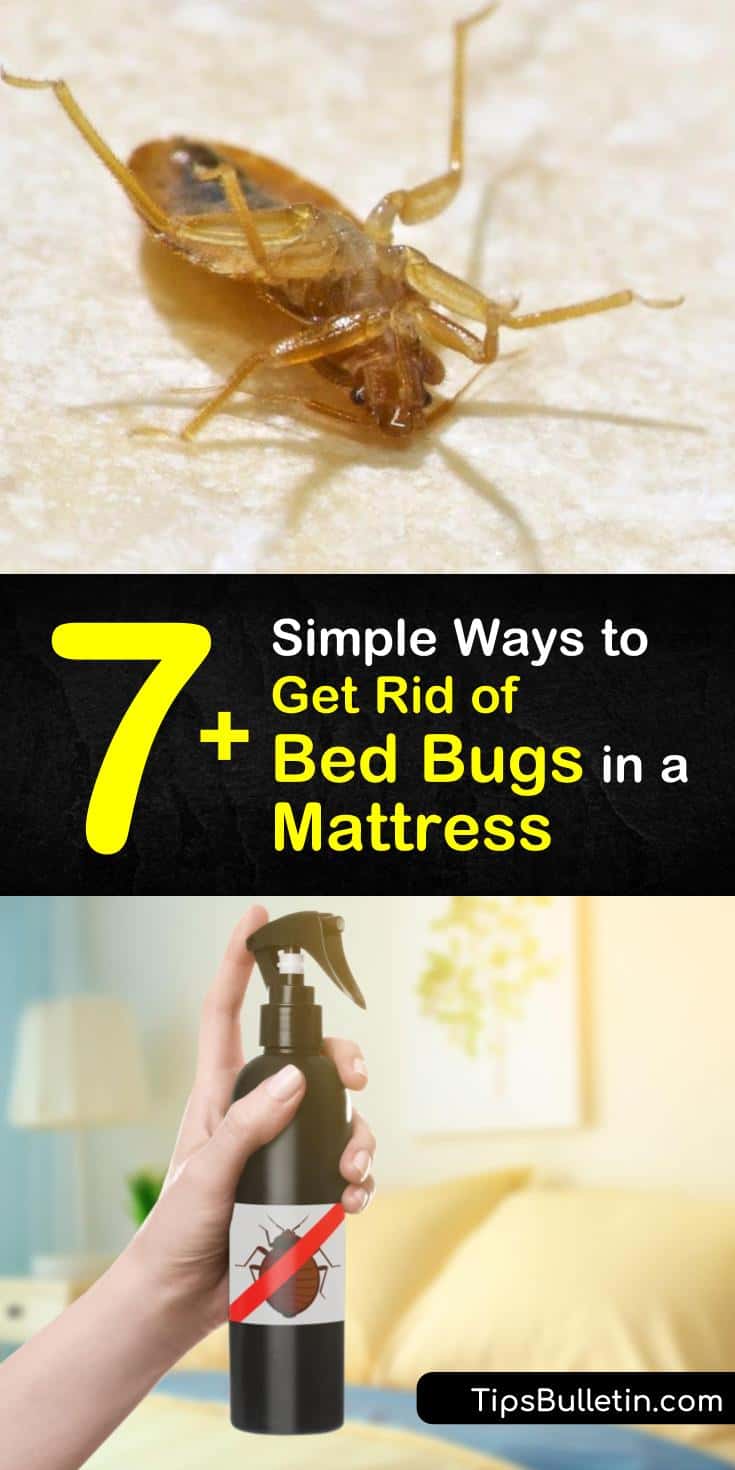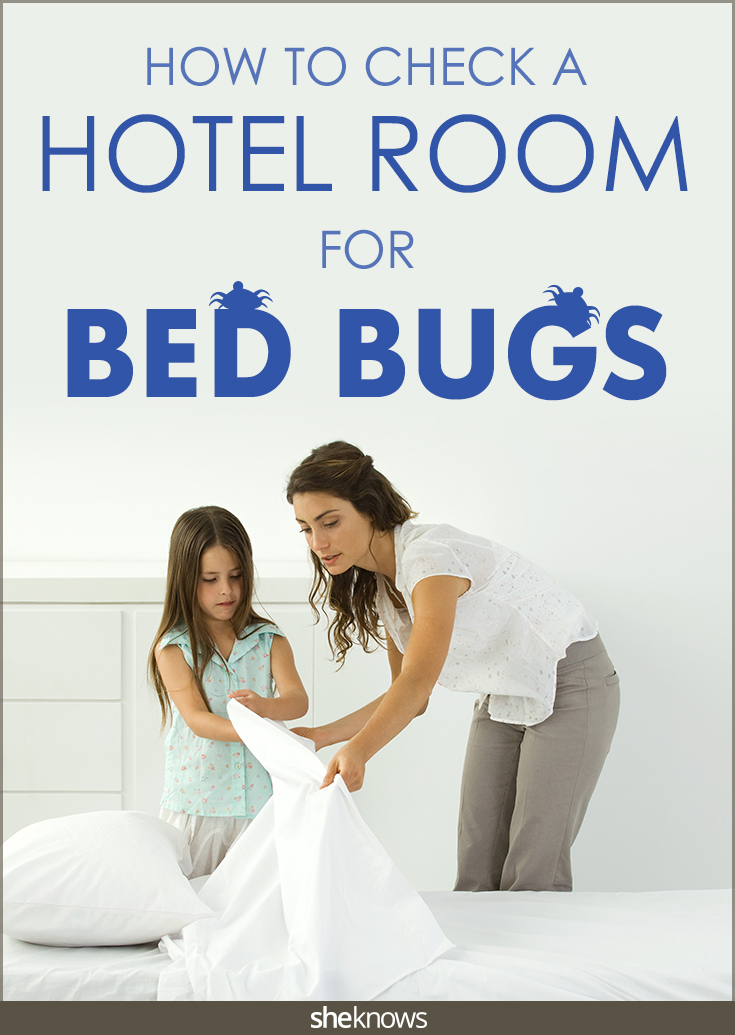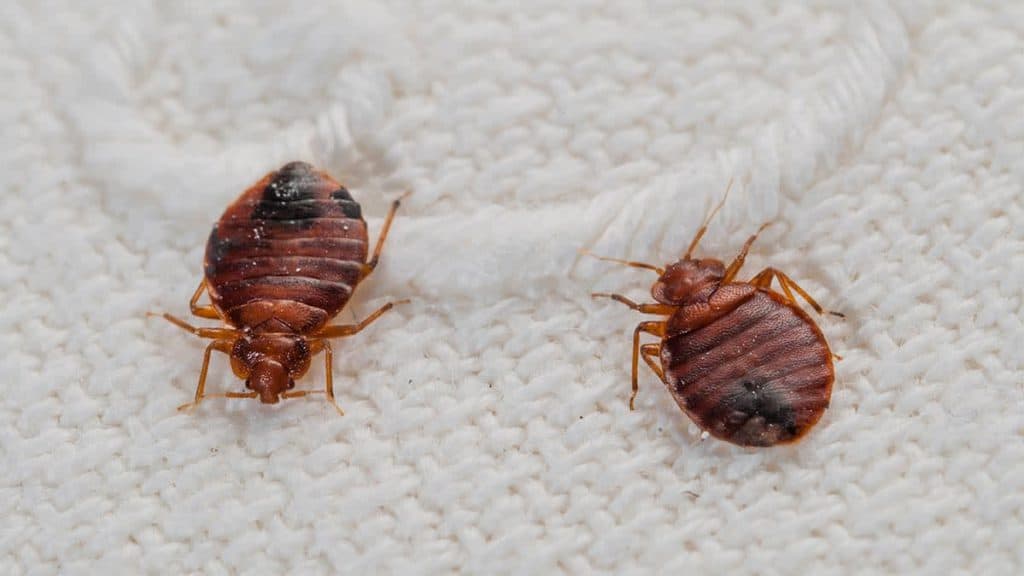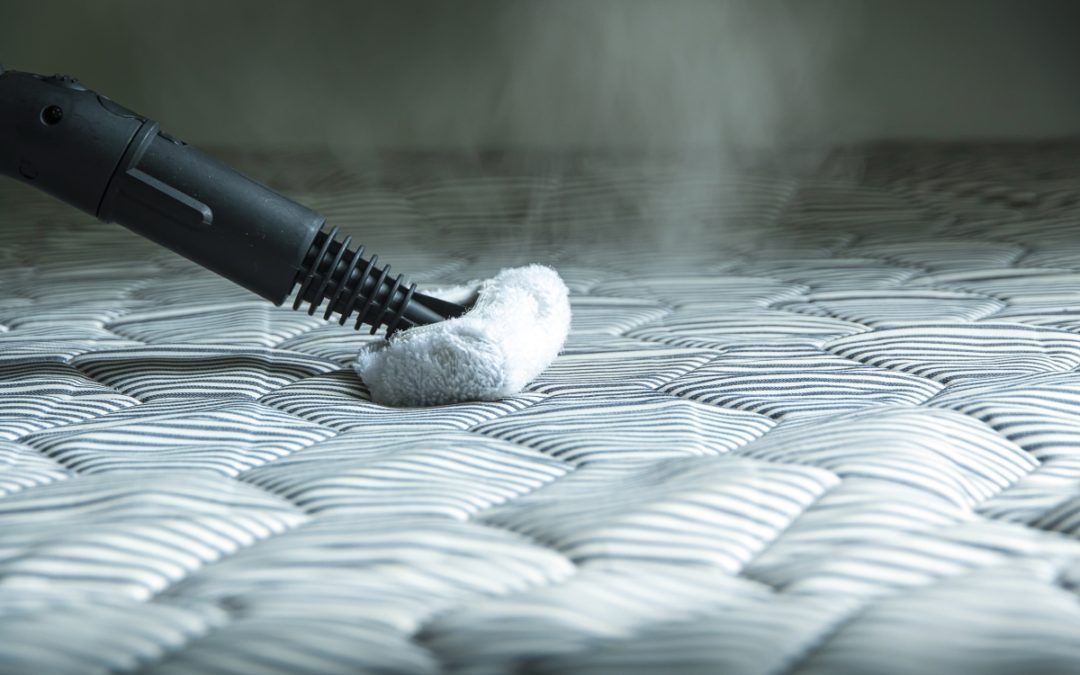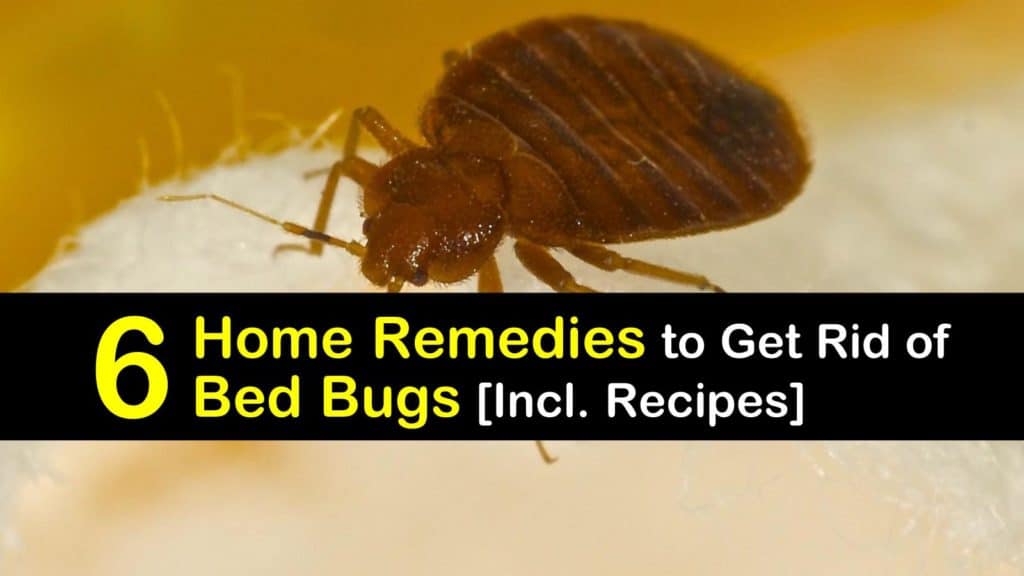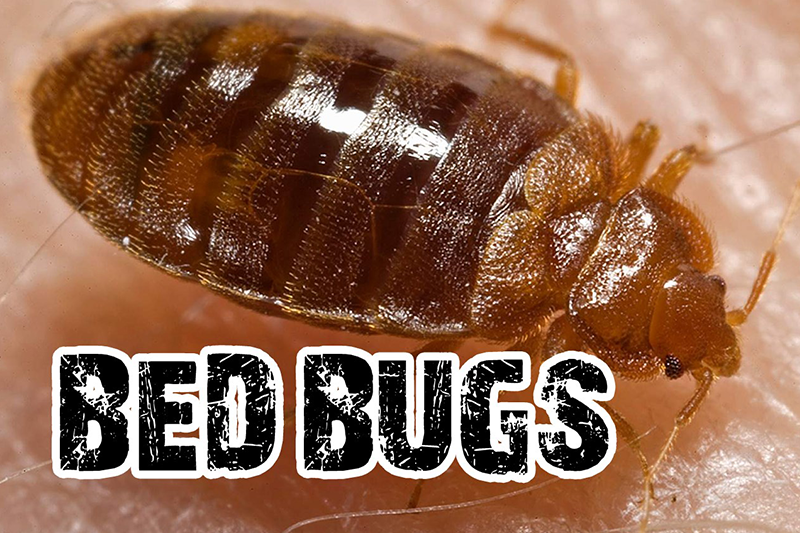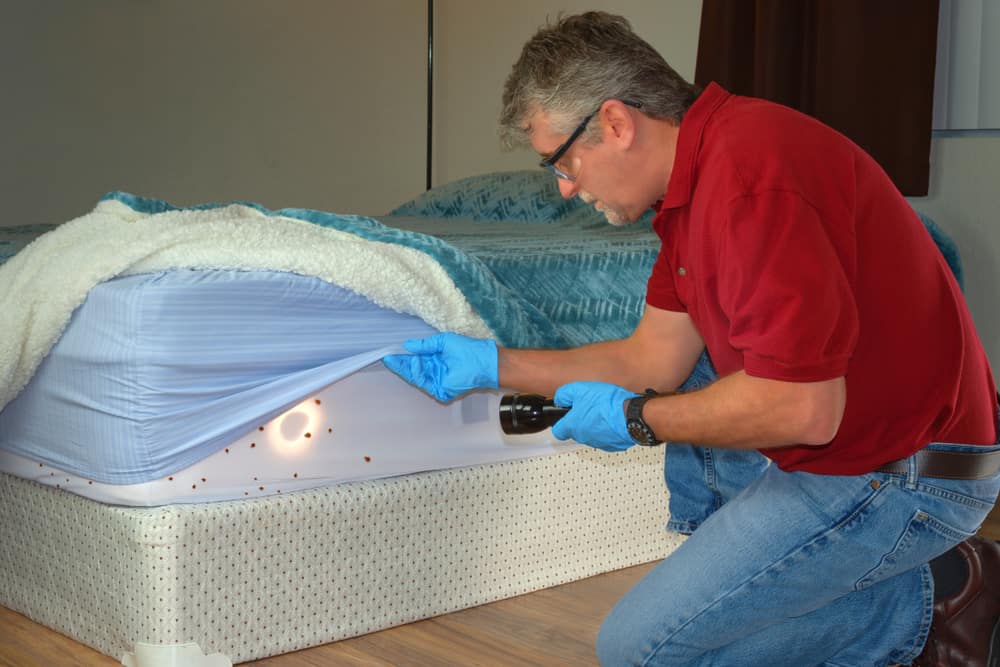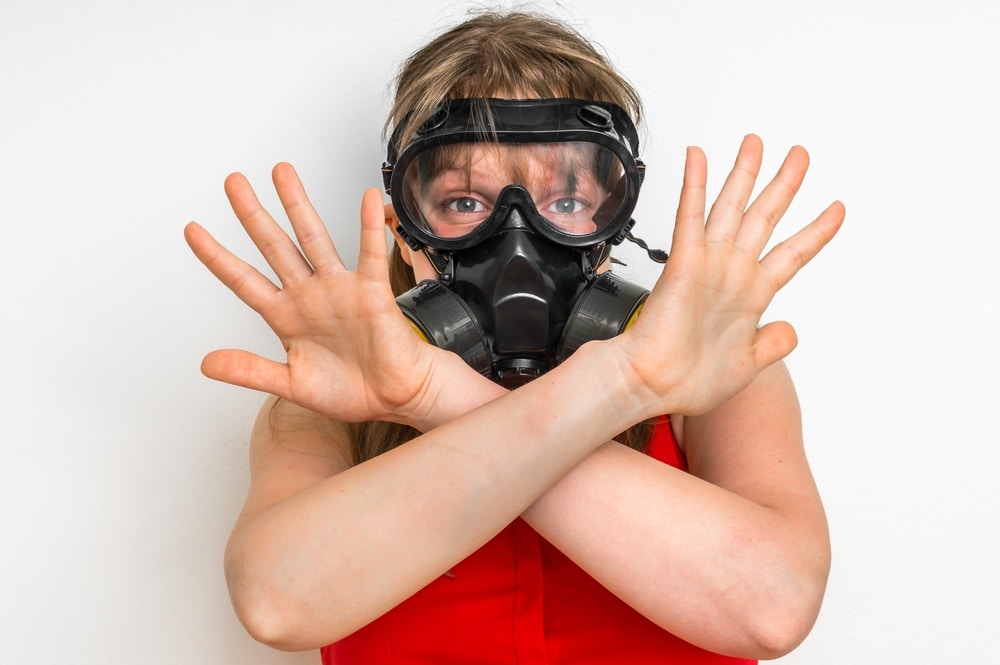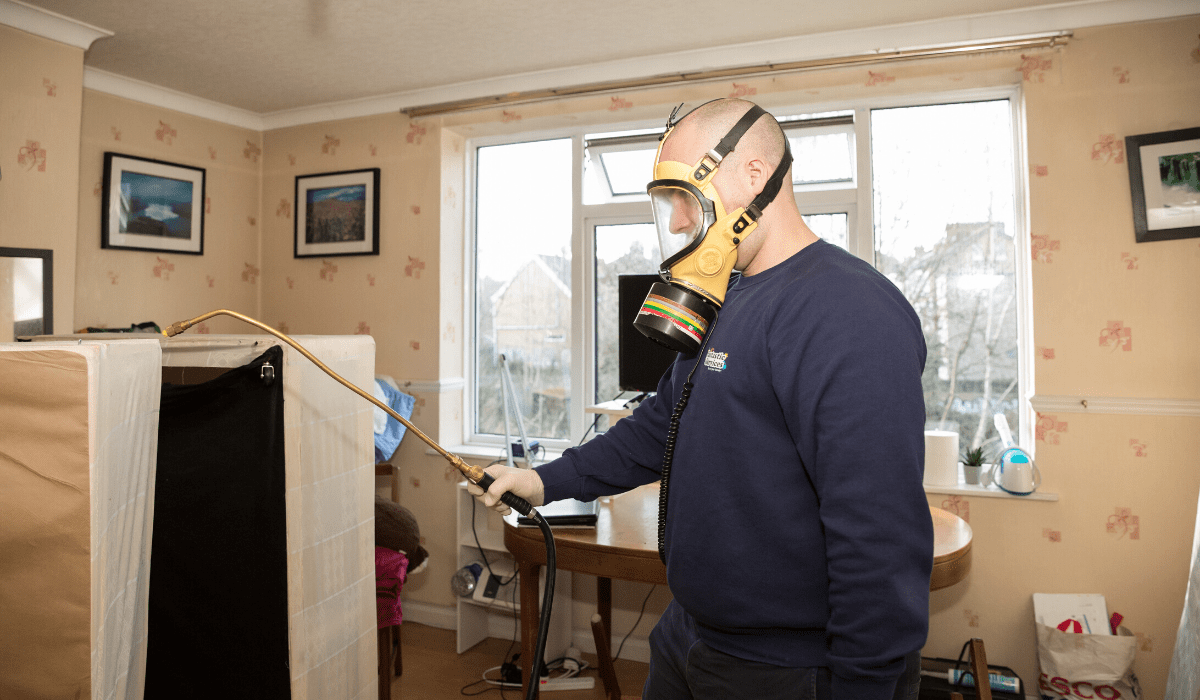1. How to Get Rid of Bed Bugs in a Dorm Room
Bed bugs are a common problem in dorm rooms, and they can be a nightmare to deal with. These pesky insects can hide in your mattress, bedding, and even your clothes, making it difficult to get rid of them. But fear not, there are steps you can take to eliminate bed bugs from your dorm room and prevent them from coming back.
If you suspect you have bed bugs in your dorm room, the first step is to confirm their presence. Look for small, reddish-brown bugs crawling around your mattress, headboard, and other furniture. You may also notice tiny black spots on your sheets, which are bed bug droppings. If you see any signs of bed bugs, it's important to act fast before the infestation gets worse.
One of the most effective ways to get rid of bed bugs in a dorm room is to use a combination of heat and pesticides. This can be done by washing all your bedding in hot water and drying it on high heat. You can also use a handheld steamer to kill bed bugs on your mattress and furniture. Additionally, you can use a specially formulated bed bug spray to target any remaining bugs and their eggs.
Another important step in getting rid of bed bugs in your dorm room is to declutter and vacuum regularly. Bed bugs love to hide in cluttered areas, so keeping your room clean and tidy can help prevent them from spreading. Vacuuming your mattress, carpets, and furniture can also help remove any remaining bugs and their eggs.
2. Dorm Room Bed Bug Prevention Tips
Prevention is key when it comes to dealing with bed bugs in a dorm room. Here are some tips to help keep these pests at bay:
Protect your mattress: Use a bed bug-proof mattress cover to prevent these bugs from infesting your mattress. Make sure the cover is specifically designed to keep bed bugs out, as regular mattress protectors may not be effective.
Be cautious with used furniture: If you're picking up furniture from a thrift store or off the street, be sure to thoroughly inspect it for any signs of bed bugs before bringing it into your dorm room. These bugs can easily hitch a ride on used furniture and make their way into your room.
Keep your room clean: As mentioned earlier, clutter can provide a perfect hiding spot for bed bugs. Keep your room tidy and vacuum regularly to reduce the chances of a bed bug infestation.
Don't share bedding or clothes: If you suspect you have bed bugs, it's important to avoid sharing your bedding or clothes with others. This will help prevent the bugs from spreading to other dorm rooms.
3. Best Mattress Covers for Bed Bug Protection in Dorms
If you're living in a dorm room, investing in a good quality mattress cover is essential for protecting your mattress from bed bugs. Here are some of the best options to consider:
SafeRest Premium Zippered Mattress Encasement: This mattress cover is specifically designed to keep bed bugs out and is made with a waterproof and hypoallergenic material. It also has a secure zipper closure to ensure the bugs can't get in or out.
SureGuard Mattress Encasement: This encasement is made with a breathable fabric that is bed bug-proof and waterproof. It also has a secure zipper closure and comes with a 10-year warranty.
Linenspa Zippered Encasement: This budget-friendly option is made with a soft, noiseless material that is bed bug-proof and waterproof. It also has a secure zipper closure and is machine washable.
4. Signs of Bed Bugs in a Dorm Room
Knowing the signs of bed bugs in a dorm room can help you catch an infestation early on and take action to get rid of them. Here are some common signs to look out for:
Bite marks: Bed bugs typically leave small, red, itchy bite marks on the skin. These bites are often in a line or cluster and can be found on areas of the body that are exposed while sleeping, such as the neck, arms, and legs.
Blood stains on sheets: If you notice small, reddish-brown stains on your sheets, this could be a sign of bed bug activity. These stains are caused by bed bugs being squished while feeding.
Musty odor: Bed bugs release a musty, sweet odor that can be quite strong if there is a large infestation. If you notice this smell in your dorm room, it's a sign that you may have bed bugs.
5. How to Treat a Dorm Mattress for Bed Bugs
If you suspect your dorm mattress is infested with bed bugs, it's important to take action immediately. Here are the steps to effectively treat your mattress for bed bugs:
Step 1: Inspect the mattress: Before treating your mattress, thoroughly inspect it for any signs of bed bugs. Pay close attention to the seams, folds, and edges of the mattress.
Step 2: Vacuum: Use a vacuum with a crevice tool to vacuum your entire mattress, including the seams and edges. This will help remove any bed bugs and their eggs.
Step 3: Steam clean: Use a handheld steamer to steam clean your mattress. The high heat will kill any remaining bed bugs and their eggs.
Step 4: Use a bed bug spray: After steaming your mattress, use a bed bug spray to target any remaining bugs and their eggs. Be sure to follow the instructions on the product carefully.
Step 5: Cover with a mattress encasement: Once your mattress is dry, cover it with a bed bug-proof mattress encasement to prevent any future infestations.
6. Dorm Room Bed Bug Infestation: What to Do
If you discover a bed bug infestation in your dorm room, it's important to take immediate action to get rid of them. Here are the steps you should take:
Step 1: Notify your dorm manager: As soon as you suspect you have bed bugs, notify your dorm manager or resident assistant. They will be able to provide you with the necessary resources and help coordinate treatment for your room.
Step 2: Launder and dry all bedding: Remove all bedding from your room and wash it in hot water. Then, dry it on high heat for at least 30 minutes. This will help kill any bed bugs and their eggs.
Step 3: Vacuum and declutter: Vacuum your room thoroughly, paying close attention to the areas where bed bugs may be hiding. Decluttering your room can also help eliminate hiding spots for the bugs.
Step 4: Treat your room with bed bug spray: Use a bed bug spray to treat your room, focusing on areas where bed bugs are likely to hide, such as cracks and crevices. Be sure to follow the instructions on the product carefully.
Step 5: Consider professional pest control: If the infestation is severe, you may need to hire a professional pest control service to get rid of the bed bugs. They have the necessary equipment and expertise to effectively eliminate the bugs.
7. Choosing the Right Mattress for Bed Bug Prevention in Dorms
When it comes to preventing bed bugs in your dorm room, choosing the right mattress can make all the difference. Here are some factors to consider when selecting a mattress:
Material: Opt for a mattress made with materials that are less likely to attract bed bugs, such as memory foam or latex.
Encasement: Look for a mattress that comes with a bed bug-proof encasement or invest in a separate mattress cover for added protection.
Thickness: A thicker mattress can be more difficult for bed bugs to penetrate, making it a less desirable spot for them to hide.
Brand reputation: Do your research and choose a mattress brand with a good reputation for quality and durability. This can help prevent the need for frequent mattress replacements, which can increase the risk of bed bug infestations.
8. How to Inspect a Dorm Mattress for Bed Bugs
Regularly inspecting your dorm mattress for bed bugs is key in preventing a full-blown infestation. Here are the steps to effectively inspect your mattress:
Step 1: Remove all bedding: Take off all the bedding from your mattress, including sheets, blankets, and pillows.
Step 2: Look for signs of bed bugs: Thoroughly inspect your mattress for any signs of bed bugs, such as bugs themselves, tiny black spots, or blood stains.
Step 3: Check the seams and edges: Bed bugs like to hide in the seams and edges of mattresses, so be sure to pay close attention to these areas.
Step 4: Use a flashlight: Use a flashlight to help you see any hidden bed bugs or eggs that may be lurking in the mattress.
Step 5: Repeat regularly: It's important to inspect your mattress regularly, at least once a month, to catch any bed bugs early on and prevent an infestation.
9. Natural Remedies for Bed Bugs in Dorm Rooms
If you prefer to use natural methods to get rid of bed bugs in your dorm room, there are some options you can try. Keep in mind that these methods may not be as effective as using pesticides and heat treatments, but they can still help reduce the infestation.
Diatomaceous earth: This natural powder is made from the fossilized remains of aquatic organisms. It is abrasive to bed bugs and can cause them to dehydrate and die. Sprinkle the powder around your mattress and other areas where bed bugs may be hiding.
Lavender oil: The strong scent of lavender can repel bed bugs, making it a natural deterrent. Mix a few drops of lavender oil with water and spray it around your room to help keep bed bugs away.
Mint leaves: Mint leaves have a strong, pungent smell that bed bugs dislike. You can place crushed mint leaves around your mattress and other areas to repel these pests.
10. Dorm Room Bed Bug Extermination: DIY vs Professional Services
When faced with a bed bug infestation in your dorm room, you may be wondering whether to tackle the problem yourself or hire a professional pest control service. Here are some factors to consider:
Cost: DIY methods can be more affordable, but they may not be as effective as professional treatments. Hiring a professional service can be more expensive, but it guarantees the elimination of bed bugs.
Time: Professional services can usually get rid of bed bugs in one treatment, while DIY methods may require multiple attempts and take longer to completely eliminate the infestation.
Severity of infestation: If the infestation is severe, it's best to hire a professional service to handle the problem. They have the necessary equipment and expertise to effectively exterminate the bed bugs.
The Dangers of Bed Bugs in Dorm Mattresses
 Bed bugs are small, reddish-brown insects that feed on human blood. They are commonly found in areas where people sleep, such as dormitories and other shared living spaces. With their ability to reproduce quickly and easily, bed bugs have become a major nuisance for many college students. In fact, according to a survey by the National Pest Management Association, bed bugs are the number one concern for students living in dormitories. In this article, we will take a closer look at the dangers of bed bugs in dorm mattresses and how to prevent and treat infestations.
Bed bugs are small, reddish-brown insects that feed on human blood. They are commonly found in areas where people sleep, such as dormitories and other shared living spaces. With their ability to reproduce quickly and easily, bed bugs have become a major nuisance for many college students. In fact, according to a survey by the National Pest Management Association, bed bugs are the number one concern for students living in dormitories. In this article, we will take a closer look at the dangers of bed bugs in dorm mattresses and how to prevent and treat infestations.
The Spread of Bed Bugs in Dorms
 One of the main reasons bed bugs are a growing problem in dormitories is due to their ability to easily travel from one place to another. These tiny insects can easily hitch a ride on clothing, luggage, and other personal belongings, making it easy for them to spread from one dorm room to another. This is especially problematic in shared living spaces, where students often bring their belongings from home or travel during breaks.
One of the main reasons bed bugs are a growing problem in dormitories is due to their ability to easily travel from one place to another. These tiny insects can easily hitch a ride on clothing, luggage, and other personal belongings, making it easy for them to spread from one dorm room to another. This is especially problematic in shared living spaces, where students often bring their belongings from home or travel during breaks.
The Risks of Bed Bug Infestations
 While bed bugs are not known to transmit diseases, their bites can cause a range of health issues. These bites can result in red, itchy welts that can become infected if scratched. In some rare cases, individuals may also experience allergic reactions to bed bug bites. Additionally, the stress and anxiety caused by a bed bug infestation can also take a toll on a student's mental and emotional well-being.
While bed bugs are not known to transmit diseases, their bites can cause a range of health issues. These bites can result in red, itchy welts that can become infected if scratched. In some rare cases, individuals may also experience allergic reactions to bed bug bites. Additionally, the stress and anxiety caused by a bed bug infestation can also take a toll on a student's mental and emotional well-being.
Preventing and Treating Bed Bug Infestations
 To prevent bed bugs from infesting dorm mattresses, it is important to regularly inspect and clean them. This includes washing and drying all bedding and clothing on high heat, vacuuming the mattress and surrounding area, and using bed bug proof mattress encasements. When traveling, it is also important to carefully inspect luggage and belongings before bringing them into a dorm room.
If a bed bug infestation is suspected, it is important to act quickly. Contacting a pest control professional is the most effective way to eliminate bed bugs from a dorm room. Additionally, students should avoid trying to treat the infestation themselves, as this can often make the problem worse.
In conclusion, bed bugs in dorm mattresses are a serious concern for students living in shared living spaces. Not only do they cause physical discomfort and potential health risks, but they can also cause stress and anxiety. By taking preventative measures and seeking professional help when needed, students can protect themselves and their dorm rooms from bed bug infestations. Don't let these tiny insects ruin your college experience – be proactive and stay bed bug-free.
To prevent bed bugs from infesting dorm mattresses, it is important to regularly inspect and clean them. This includes washing and drying all bedding and clothing on high heat, vacuuming the mattress and surrounding area, and using bed bug proof mattress encasements. When traveling, it is also important to carefully inspect luggage and belongings before bringing them into a dorm room.
If a bed bug infestation is suspected, it is important to act quickly. Contacting a pest control professional is the most effective way to eliminate bed bugs from a dorm room. Additionally, students should avoid trying to treat the infestation themselves, as this can often make the problem worse.
In conclusion, bed bugs in dorm mattresses are a serious concern for students living in shared living spaces. Not only do they cause physical discomfort and potential health risks, but they can also cause stress and anxiety. By taking preventative measures and seeking professional help when needed, students can protect themselves and their dorm rooms from bed bug infestations. Don't let these tiny insects ruin your college experience – be proactive and stay bed bug-free.


